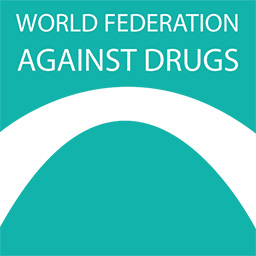Today, on Orange Day, we join the global movement to highlight one of the most urgent and rapidly evolving threats to gender equality: digital violence against women and girls. As technology becomes an integral part of our daily lives, it must also become a space of safety, dignity, and respect; not another arena for discrimination, harassment, and abuse.
As shared by UN Women, one in three women worldwide experiences violence in their lifetime. This is not just a statistic; it is a global human rights emergency. As we commemorate 30 years since the landmark Beijing Declaration and Platform for Action, the 2025 UNiTE campaign calls on the world to confront a modern reality: violence doesn’t just happen in homes, schools, or streets – it happens online, on our screens, in our messages, and within digital spaces where millions of women and girls connect, learn, work, and express themselves.
This year’s theme, “End Digital Violence Against All Women and Girls”, underscores that digital safety is not a luxury but a fundamental part of gender equality.
What is Digital Violence?
To understand digital violence and be able to address it before it starts, UN Women has provided a clear overview of what digital violence is and what steps could be undertaken once it is spotted. While we share a summary, click here for the full article.
Technology-facilitated violence covers a wide spectrum of harmful behaviours, many of which begin subtly but can escalate into serious harm. Digital abuse includes:
- Harassment, stalking, pressure, and surveillance through constant messages, location tracking, or controlling who you can communicate with.
- Image-based or deepfake abuse, including sharing private images without consent, manipulating photos or videos, or threatening to leak them.
- Trolling, blackmail, hate speech, and smear campaigns are designed to silence, humiliate, or intimidate.
- Digital dating abuse, where partners use apps and social platforms to control, monitor, or manipulate.
- Grooming, exploitation, and identity theft, including impersonation, doxxing or using personal details to cause harm.
Digital abuse often starts with “little things”, such as a partner demanding your password, constant check-ins, being pressured to share intimate images, or receiving inappropriate comments that make you feel uncomfortable or unsafe. These are not minor concerns; they are early signs of control and violation.
Abuse does not have to be physical to be real. When someone uses technology to threaten, control, shame, or exploit you, that is digital violence.
Why does it feel so isolating
Abuse thrives in silence. Many women feel alone, ashamed, or afraid to speak out, especially when the violence is digital, invisible, or dismissed as “just online”. The anonymity of abusers, combined with blame, stigma, and fear of judgment, keeps many silent. But recognising the signs and speaking up is one of the most powerful ways to stop it.
What can you do?
If you or someone you know is facing digital abuse, these are the steps you can take (for more information, visit the UN Women website).
- Block and report: use reporting tools to stop contact and document abuse
- Save the evidence: keep screenshots, links, messages, timing, even if you don’t report immediately.
- Protect your accounts: use two-factor authentication, review privacy settings, and check for tracking apps.
- Stop the spread: use available tools to remove or restrict non-consensual images.
- Tell someone: you are not alone; speak to a friend, family member, teacher, counsellor, or local support service.
- Seek help: many countries now offer hotlines, legal pathways, or NGOs specialising in online abuse.
Correlation between Digital Abuse and Substance Use
Digital abuse is often linked with other forms of violence, including emotional manipulation and domestic abuse. Furthermore, research shows that substance use correlates with digital abuse. It shows that individuals experiencing cyber dating abuse may turn to substances as a coping mechanism to deal with trauma, stress, and/or emotional harm. Conversely, substance use can also make individuals more vulnerable to digital exploitation, and in some cases, abusers use a woman’s substance use against her to increase control, isolate her, or justify manipulation. (source)
This complex relationship shows that digital abuse is not just a technical issue; it is deeply emotional, psychological, and relational. Effective support must recognise these connections and address the full reality of survivors’ experiences.
What the 2025 UNiTE Campaign Calls for
The campaign reminds us that ending digital violence is not an individual responsibility but a shared duty involving governments, tech companies, communities, and every person.
- Governments must pass and enforce laws that protect against digital violence, safeguard personal data, and hold platforms accountable.
- Tech companies must design safer platforms, remove harmful content, ban abuse, and publish transparent reports.
- Donors must invest in organisations that support survivors and advocate for women’s digital rights.
- Individuals must challenge harmful online norms, support survivors, and speak out against abuse wherever it happens.
A Call to Action
Ending digital violence requires more than awareness. It requires courage, accountability, technology that protects (not harms) and systems that empower women and girls both online and offline. We must ensure that women and girls can exist, speak, lead, create, learn, and thrive without fear, both online and offline.


Leave a Reply
You must be logged in to post a comment.